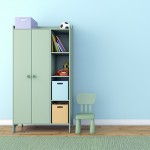In our first installment of Design for Autism, we talked a little bit about “Object in Content” and how the idea of “sameness” is important as we design the spaces that children with Autism would routinely visit. In this article, we will focus on dealing with “Impaired Sensory Integration as we design.”
First a quick review: Autism is a sensory processing disorder that leads to sensitivity to environmental stimuli. Children with Autism tend to overreact or underreact to environmental stimuli and have difficulty focusing on more than one stimulus at a time.
“Some high-functioning autistic adults describe experiences such as turning off the car radio while trying to read a road sign or turning off a kitchen appliance so they can taste something” (Paron-Wildes). There is a scale for how individuals with Autism experience each of the 5 senses, from hyposensitive to hypersensitive, and it is important to note that different stimuli within the same sense can fall at different places on the scale. An example of this phenomenon would be a child who is able to hear high pitched frequencies that others cannot, but is unable to hear low pitch frequencies.
Most environments we design for children are multi-sensory, featuring sights, sounds, textures, and even smells, simultaneously to create an engaging experience. Good design practice means understanding the role of the environment for children with sensory integration deficiencies. Areas for teaching or therapy, eating, sleeping, and even bathrooms should be simple, so children are able to focus on the task at hand. When selecting finishes and imagery to be used in a space designed for children with Autism, consider the following guidelines:
-
Use pattern intentionally or avoid it entirely. While a simple zig zag or checkerboard carpet tile pattern may be visually appealing, it can become a fixation for a child with Autism.
-
Avoid use of symbols and select photographs that describe activities when possible. While most children will see an image made from shapes, an Autistic child may only see the individual shapes, not understanding the bigger picture.
-
Select appropriate colors and consider natural finishes for furniture when possible.
-
Use natural lighting whenever possible. While we may not notice it, some Autistic children are able to see the flicker of a fluorescent light, which can be distracting.
-
Provide quiet spaces for “escape”.
* Design for Autism from Birth to Early Childhood, by A.J. Paron-Wildes


